That we should build a bridge. British Army pontoon bridges and ferries
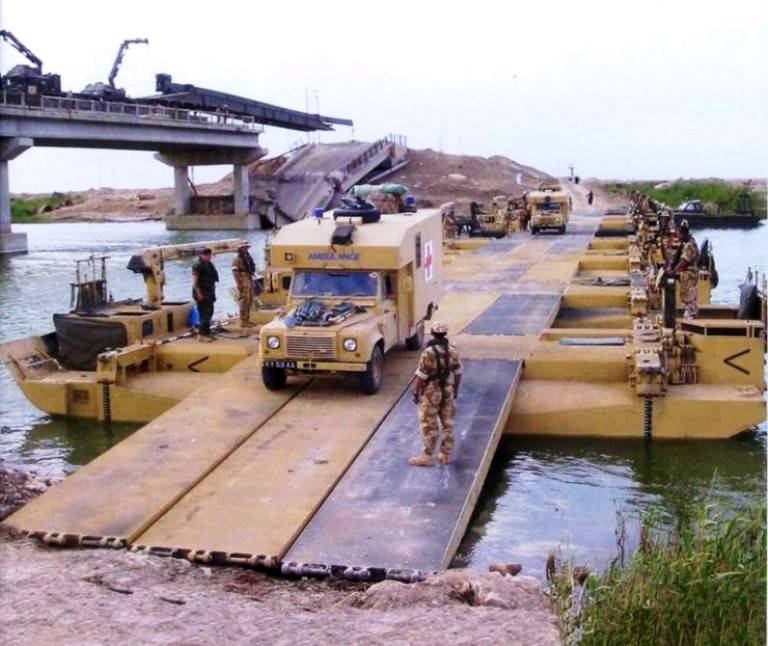
This article will focus on floating and pontoon bridges.
But first, let's figure out what a floating bridge is, and what a pontoon bridge is and what is its main difference from a floating bridge.
Floating bridge Is a bridge assembled to overcome a water barrier (rivers, lakes, straits, etc.).
Such a bridge consists of two main parts.
The first is a floating bridge support: a boat or a pontoon.
The second part is the deck or carriageway, which are attached to the top of the boat (pontoon).
A type of floating bridge is pontoon bridge... It is a structure in which the pontoon boat and the roadway are pre-connected into one whole. This connection constitutes the link of the bridge. When assembling a pontoon bridge, these links are connected to each other, collecting a passage over a water hazard.
Thus, the pontoon bridge is an improved version of the pontoon bridge.
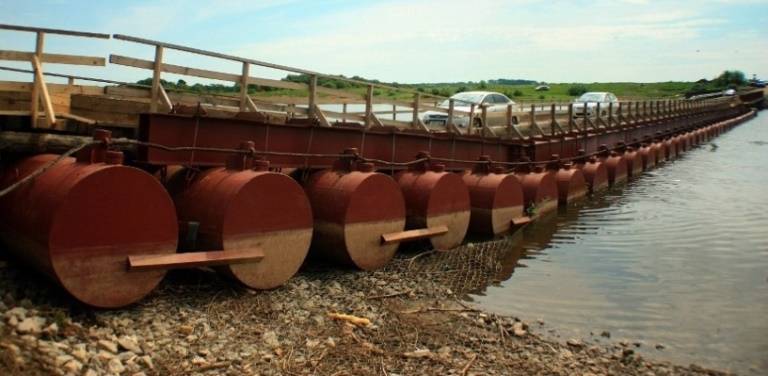
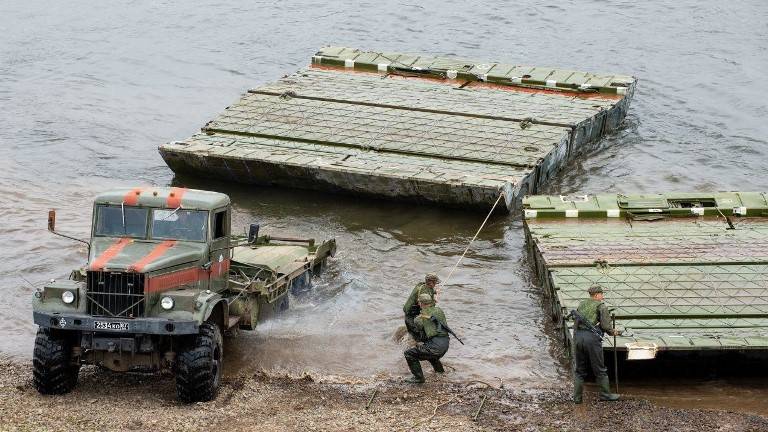
In our environment, the term "pontoon bridge" is more common. Therefore, in the further presentation, we will often use just such a phrase.
So, in its simplest form, a pontoon (pontoon) bridge is a collection of shallow-draft boats attached to each other and installed across a river or canal, with some kind of track or deck tied to the top.
The water acts as a support, so the capacity limitation is determined by the general and point buoyancy of pontoons or boats.
The reality of pontoon bridges is such that since then they have not made much progress in terms of their design.
Of course, materials, pontoon fastening methods, flooring materials, etc. have improved. All this has led to an increase in carrying capacity, the ability to withstand fast river currents and high deployment rates, but the basic principles have remained unchanged.
An even older version of the pontoon bridge is the river ferry. A simple flat-bottomed non-motorized boat that is towed through a water hazard using human, animal or engine power.
The pontoon bridge as a whole will have a much higher carrying capacity than the ferry, but the ferry has the distinct advantage that it does not block the river or canal for other ships. On fast flowing rivers and rivers with high ebb and flow levels, a pontoon bridge can also suffer without a serious anchorage system and constant attention from the bridge builders.
Pontoon bridges and ferries now often share common components. For example, the English Bailey Pontoon used many of the features of the Bailey Bridge, while the modern Air Portable Ferry Bridge can be used as a bridge, pontoon or ferry.
Therefore, it is sometimes difficult to separate the development of pontoon bridges and ferries because they are interconnected.
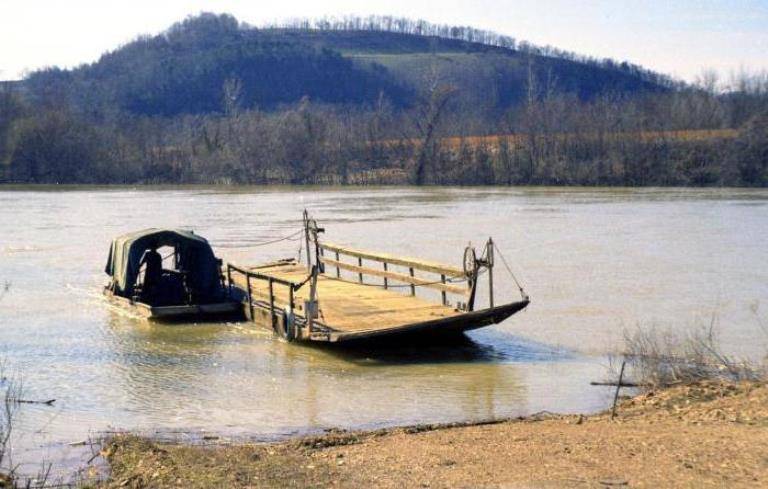
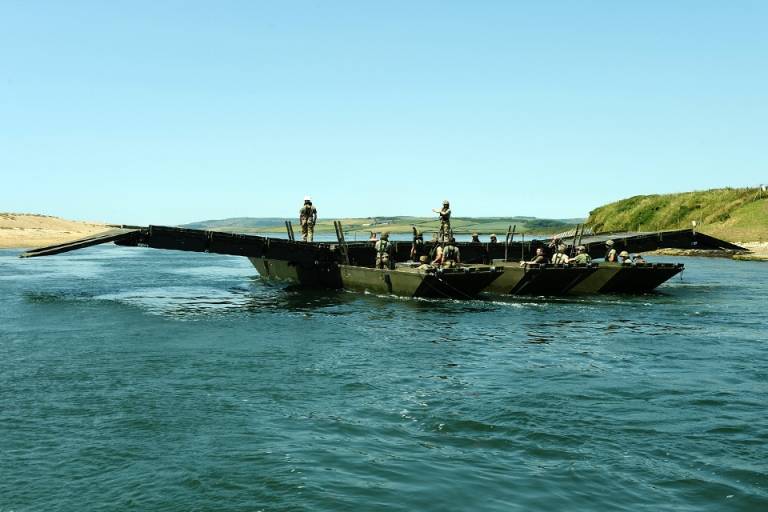
The first pontoon bridges
Most historians believe that the first pontoon bridges were created and began to be used in China several hundred years before our era. They were usually called boat bridges or pontoon bridges. The texts from the ancient book "Shi Jing" indicate that the first in stories the pontoon ferry was built in the XNUMXth century BC.
However, historian Joseph Needham, relying on more reliable sources, says that Chinese temporary pontoon bridges became common only during the XNUMXth and XNUMXth centuries BC.
The first more permanent and reliable pontoon bridges, linked by iron chains, appear during the Qin Dynasty between 221 and 207. BC. Joseph Needham describes them as boats lined up with planks across these boats, which is broadly the same as the pontoon bridge structure today. He also points out that Qin Dynasty engineers improved pontoon bridges by developing more reliable anchorages between boats and the roadway for permanent use.
An excellent example of this work of Chinese engineers is the Dongjin Bridge in Ganzhou, which was built during the Song Dynasty (AD 960-1279).
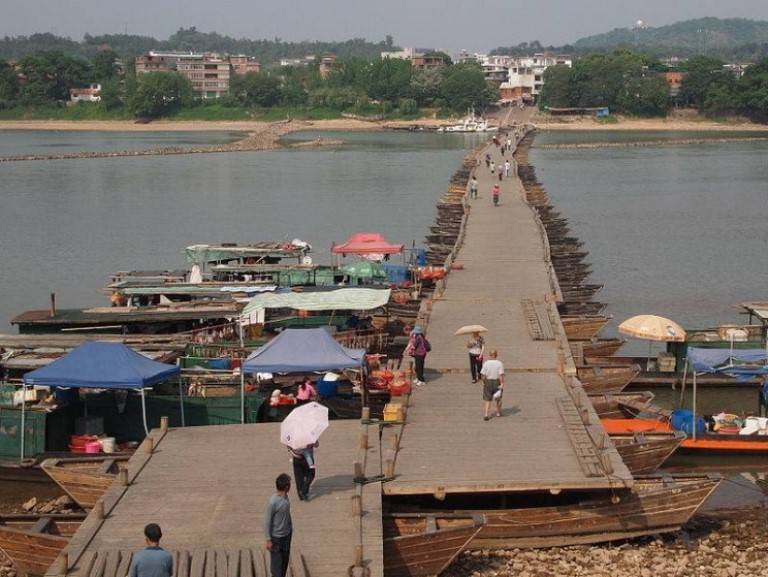
In Europe, an example of such bridges can be considered the pontoon bridges of the ancient Persians and Romans.
The most famous story is about a 2 km long pontoon bridge across the Bosphorus, which was built in 493 BC. e. Greek engineer for the Persian emperor Darius, so that he could pursue the retreating Scythians.
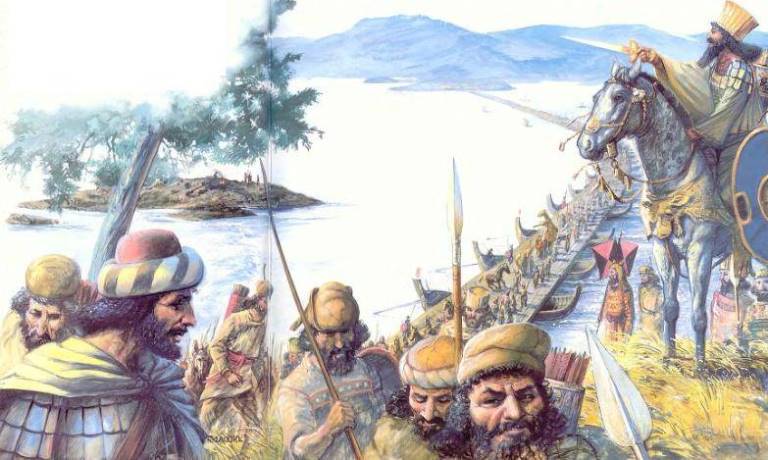
A little later, in 480 BC. e., for Xerxes the Great from Persia, a large pontoon bridge was built across the Hellespont, or Dardanelles in modern terminology, which separated Asia from Europe. The first two bridges were made of papyrus and linen. Therefore, it is not surprising that they were destroyed during the storm. At that time, Xerxes reacted quite reasonably to this sad event: he beheaded the engineers, ordered the water to be flogged and the construction of new bridges began.
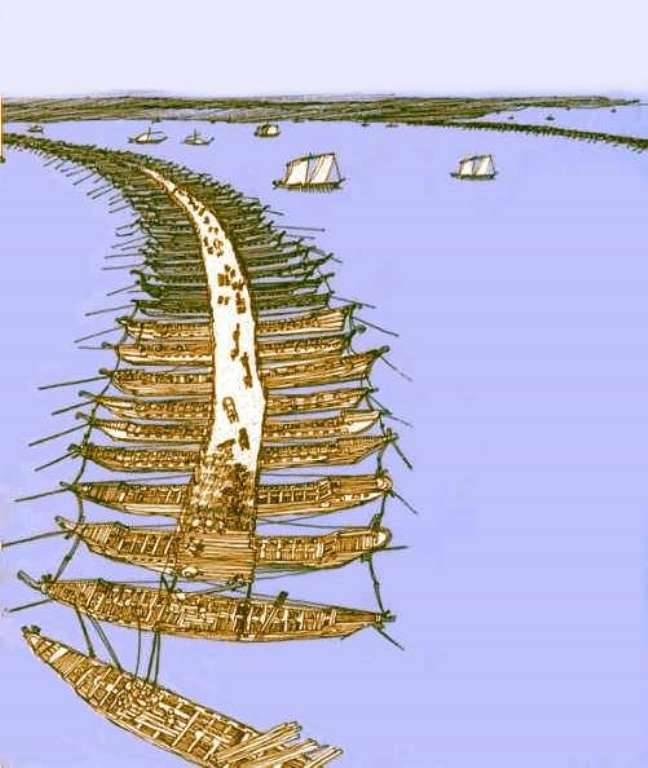
The later pontoon bridges (there were two) were stronger. As the Greek historian Herodotus wrote, they were built from more than 700 ships (approximately 360 ships per bridge), connected with ropes. In addition, the ships, so that they would not be scattered by the storm again, were installed on very heavy anchors.
In the first version of the bridge, the anchors were only on the extreme coastal ships. After the installation of the ships, boards were installed on top of them, covered with a layer of brushwood and earth, forming a roadway. Also, on the sides of the roadway, a fence made of branches was installed so that the animals would not panic at the sight of the surrounding water. The crossing of Xerxes' army took seven days and nights. At the same time, the army used the northeast bridge, and a huge number of servants and pack animals were ferried across the southwest bridge.
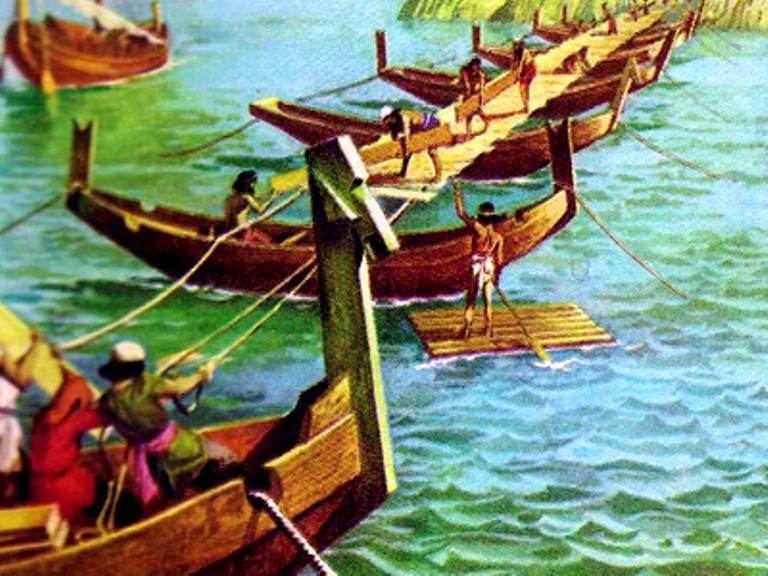
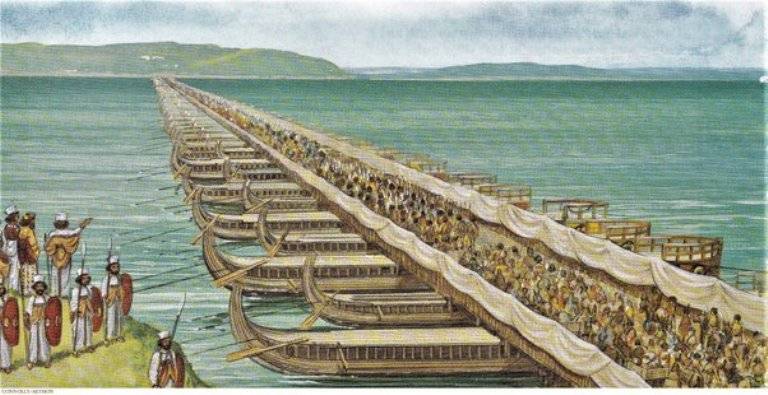
Alexander the Great sometimes carried ships with his army, divided into parts, which gathered together when they went to the river bank, as when crossing the Hydasp. The practice of using skins to inflate when troops had to cross the river was adopted by the Greeks, Romans, and Mongols.
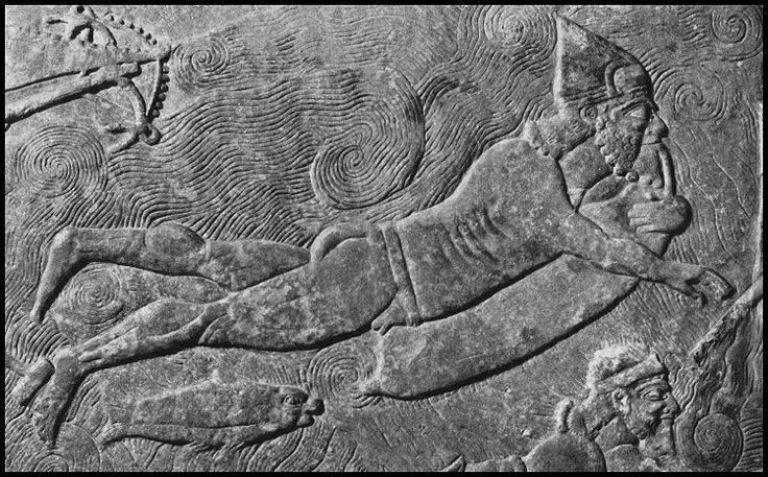
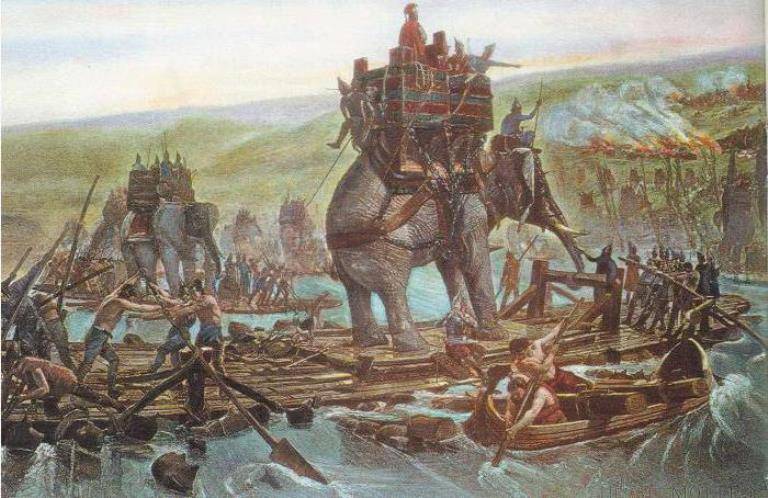
The Romans were also great military engineers, and many of their military structures still stand today.
During the First Dacian War in 102 AD, Roman engineers built a large pontoon bridge across the Danube. The structure of the bridge, like its predecessors, consisted of connected boats and a boardwalk.

A few years later, this event was overshadowed by the construction of another famous stone Trajan Bridge, which was 1 meters long. For more than a thousand years, this bridge was the longest arch bridge in the world.
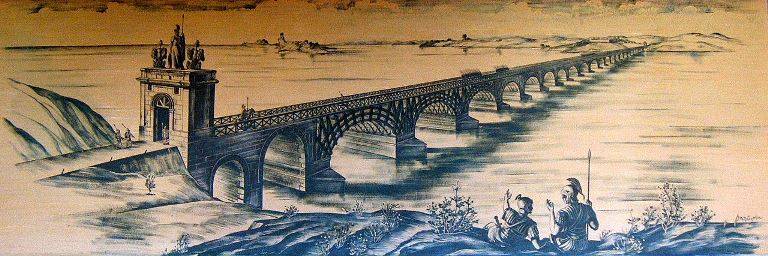
Pontoon bridges began to be used more massively in the XNUMXth century.
At this time, pontoons were used as regular components of army trains: the Germans used leather, the Dutch used a tin can, and the French used copper "skin" on strong wooden frames.
In the middle of the XNUMXth century, the Russians invented a collapsible pontoon made of canvas fabric stretched over a wooden frame. For transportation, the frame was made collapsible, and the tarpaulin was folded. It was the pontoon park of Andrey Dumb.
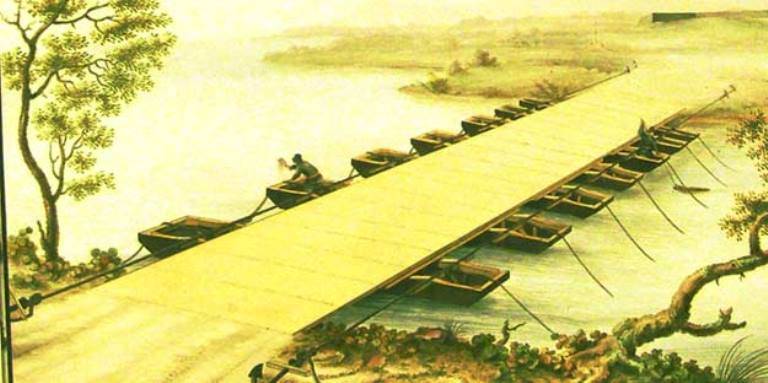
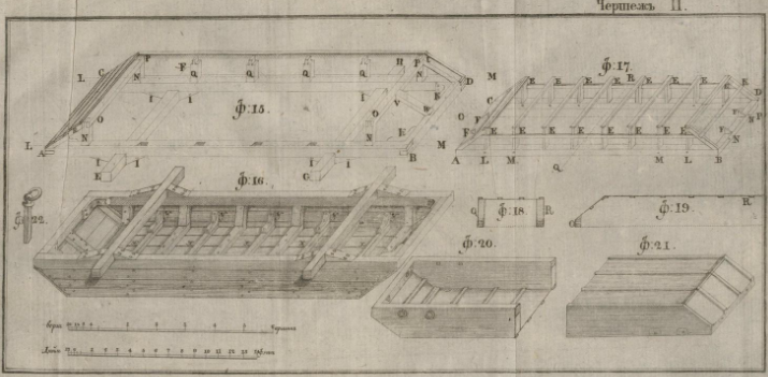
United Kingdom
And now let's go directly to the English bridges.
One of the earliest examples of military bridging in Britain was the attempt by King Edward I to cross the Menai Strait in Wales. Although from a technical point of view, this attempt was successful, but from a tactical point of view, it turned out to be a failed operation.
In 1277, to suppress the Welsh uprising, King Edward I sent a detachment of 2 soldiers to capture Fr. Anglesey, thereby depriving the opposing forces of most of the food and bypassing the defending forces at Conwy.
To cross the strait, the Cinque harbor keeper (Stephen de Pencaster) was tasked with building a pontoon bridge. For this work, he employed carpenters and shipbuilders from his area. In terms of construction, the new bridge was no different from all the previous ones. It also consisted of several interconnected boats and a log deck carriageway. This structure was named "boat bridge".
Unfortunately, the bridge elements were found to be too heavy to transport. Therefore, it was decided to build a bridge in Chester, closer to the territory of the rebels.

Despite the fact that the bridge was in perfect order, poor communication and coordination of actions played a negative role. As a result, the British troops crossed the strait at the most inopportune moment and were caught between the growing tide and the opposing forces. All this led to a disastrous result.
This is how Walter Gisborough described it in his chronicle:
Edward also used military bridge builders in Scotland, this time more effectively. The king commissioned the military engineer, Master Richard, to create a set of portable bridges at King's Lynn in Norfolk. It was decided to use the bottom bridges in the future to cross the Forth River, carefully bypassing the well-protected stone Stirling Bridge.
The next stage in the use of pontoon bridges dates back to the beginning of the XNUMXth century.
There is fragmentary evidence of the use at the beginning of the century of a number of makeshift pontoon bridges in India by General Sir Arthur Wellesley, but no specific examples.
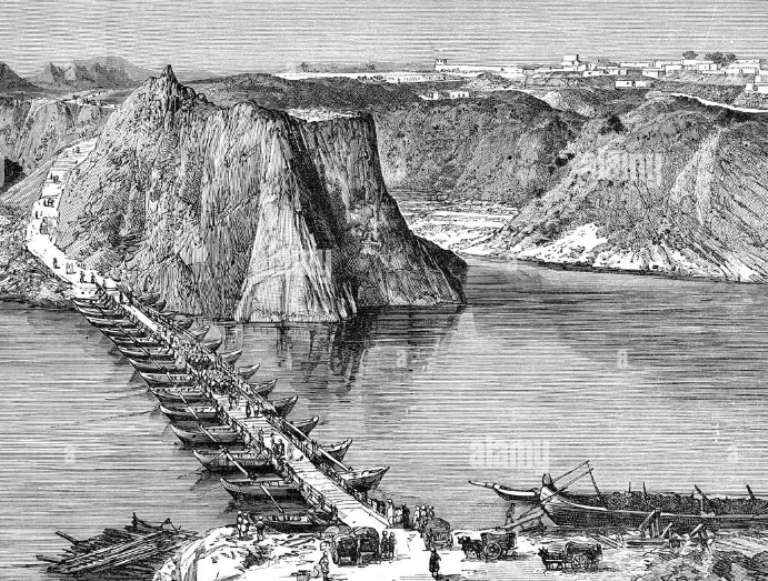
In 1809, during the Napoleonic Wars in Spain, Lord Wellington ordered the destruction of a stone bridge over the Alcantara River in order to impede the freedom of movement of the French. Although the explosion did not initially completely destroy the bridge, after a while one arch collapsed on local residents. This made a negative impression on the military, especially as it was an operation under the command of the British armed forces.
When the course of the war changed, in April 1812, Wellington commissioned Lieutenant Colonel Sturgeon to repair a previously destroyed bridge or build a pontoon bridge. Sturgeon was not an officer of the Corps of Engineers, but an officer of the Royal Staff. According to his plan, a suspension bridge over the ruined arch was the best option. Construction was carried out far from the bridge site, and its elements were transported by wagons. After the ropes were stretched in place across the span, a rolled-up bridge was deployed on them and secured.
This is how the episode is described on the Napoleon Series website by General Leith Hay, commanding officer of the 5th Division:
To understand the importance of this moment and the subsequent destruction of the French pontoon bridge over the river. Tagus at Almarase, it must be said that these two actions reduced the march distance for Wellington's troops by 250 km and added 650 km for the French.
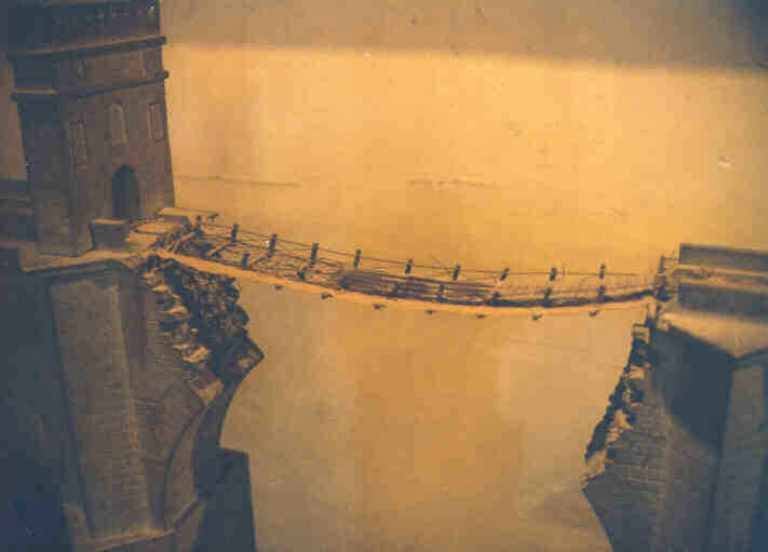
In the same year, 1812, significant efforts were made to build bridges over the Tagus River. But all efforts ended with the construction of a stone bridge with a length of more than 190 m.
When Wellington was victorious in Spain, he moved to France.
To block the French army on its way to Toulouse, it was necessary to cross the Adour River. The choice of the crossing site was complicated by the presence of the forces of the French garrison, so a location downstream was chosen to provide some protection for the crossing, but this meant that the river was wider here (almost 275 m) and the bank was subject to strong tidal fluctuations.
The solution of this important task was entrusted to two officers of the Corps of Engineers - Lieutenant Colonel Elfinston and Lieutenant Colonel Burgoyne, as well as the well-known Lieutenant Colonel Sturgeon, who represented the Royal Service Corps. Lieutenant Colonel Burgoyne was later promoted to field marshal and, by the way, one of the buildings (Burgoyne Research Center) at the Royal Military School of Engineering in Chatham is named after him.
Due to the large width of the barrier and the strong fluctuation of the tides, it was obvious that conventional pontoons or suspension bridge were not suitable for the job. Therefore, military engineers made a decision that assumed the use of local coastal vessels called chasse matrees.
These were large boats, some of which were over 15 meters in length. 48 boats were "leased". The plan developed by the lieutenant colonels provided for the mooring of boats with a bridge surface consisting of wooden planks at a distance of 10 to 12 meters. Due to the large amount of timber required, Lieutenant Colonel Sturgeon proposed a technique similar to the one he used to build his bridge over the Tagus in Spain, that is, using ropes to provide a surface on which fewer planks could be placed.
The cables were pulled to the shore from the two central boats and secured with weights (18-pound cannons) and spiers anchored in the ground. To keep the boats on the water, each of them had its own anchor, and some had two anchors.
Due to the fast flow of the river, it was more difficult to do than to suggest. It took a lot of effort to install the bridge, but it was worth it. Only 34 boats were delivered to the bridge point. The rest were lost due to bad weather and high tide. A few days before the start of the equipment for the crossing, a bridgehead was captured on the opposite bank. Its defenders had to repulse several attacks from the French.
The bridge was quickly completed overnight, and by noon the next day, troops, vans and artillery had been transferred across it.
The historian Napier said of the bridge:
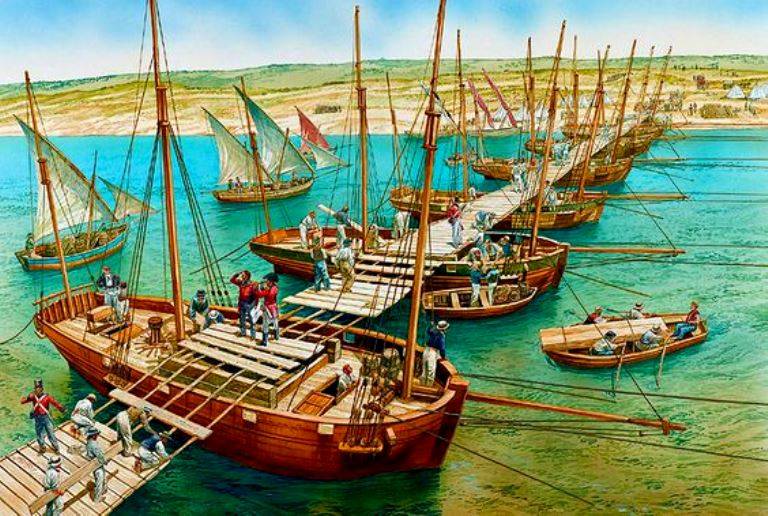
The Duke of Wellington took a keen interest in military bridging and was fully aware of the strategic advantages that this could bring. Therefore, much more attention has been paid to this subject.
Permanent bridge trains were introduced and the structure of the Royal Engineers in the Corps of the Royal War Masters was established. In 1812, a permanent training center was established at Chatham to train the Corps of War Craftsmen (later the Corps of Engineers and Miners) and the Royal Engineers.
During the war in the Iberian Peninsula, Wellington also realized that bridge equipment must be very mobile, so he ordered that some of the horses be removed from the artillery train and given to the engineers.
In his dispatches, he wrote:
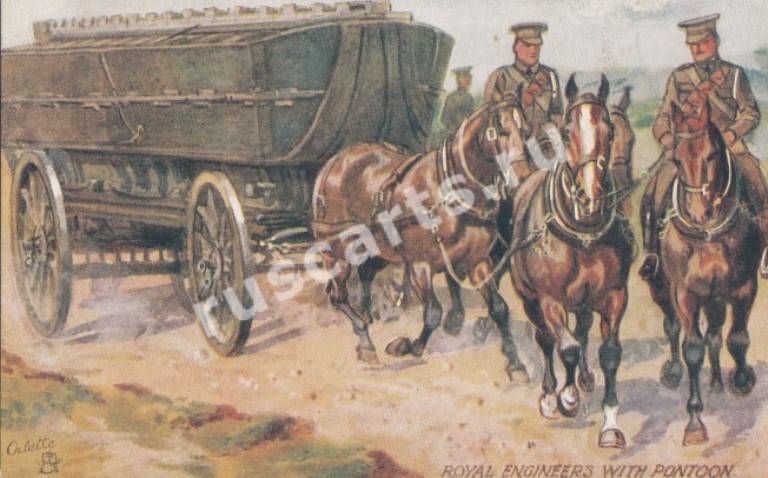
The end of the Napoleonic Wars marked almost 50 years of peace in Europe. But British forces continued to be used overseas, such as in India.
In 1839, during the offensive on Afghanistan, a pontoon bridge with a very large span was built in Bukkur (now Pakistani territory).
Bukkur is a fortified island and a natural passage on the Indus bank between Sukkur and Itore. The bridge itself consisted of two spans, one with a length of 200 m and the other more than 300 m. The construction of this bridge took more than 90 boats and 14 days. Although the river's high speed and rocky banks posed problems, the bridge allowed several thousand soldiers and dozens of vehicles to be thrown across it.
Bridges and further, throughout the XNUMXth century, continued to play an important role during the hostilities in Abyssinia, Crimea, India, West and South Africa.
The first open-type pontoons had a number of disadvantages, among them the biggest - the difficulty of transporting them to the site (if not by river) and their susceptibility to bad weather. Therefore, in the early 1800s, a concerted effort was made to improve bridge design.
In 1814, Colonel Sir James Collton (elsewhere Colleton) constructed a cylindrical pontoon buoy with tapered ends and made of wooden rivets like a barrel. Unfortunately, this invention was not successful. But the closed pontoon became the basis for later types.
The first significant development thereafter was the Pesley Pontoon in 1817, designed by Lt. Col. Charles Pesley of Chatham Engineering Company. Ponton Pasley differed from open boats in a number of key ways.
It was closed and, therefore, had more resistance to water flooding, had many anchorage points for fastening the road deck and, perhaps more importantly, it was sectional - it consisted of two parts.
The bow of each part of the pontoon was pointed, and the stern was in the shape of a square. This made it possible to split the pontoon, as indicated above, into two parts (half-pontoons) to facilitate transportation. When assembling the bridge, a pair of such pontoons were connected aft to form a single float (single support), both ends of which were sharpened, which is an important consideration for use on water hazards.
The pontoons were constructed of lightweight timber frames covered with copper sheets and lined with wood. Each half-pontoon was divided into watertight compartments and equipped with a means of pumping water. To transport the bridge, a pair of half-pons and the superstructure of one span of the bridge were loaded onto one trolley.
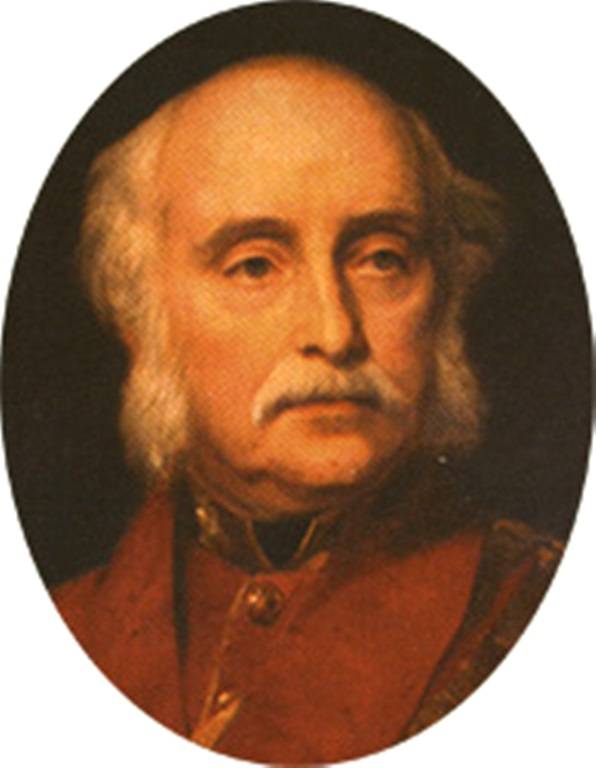
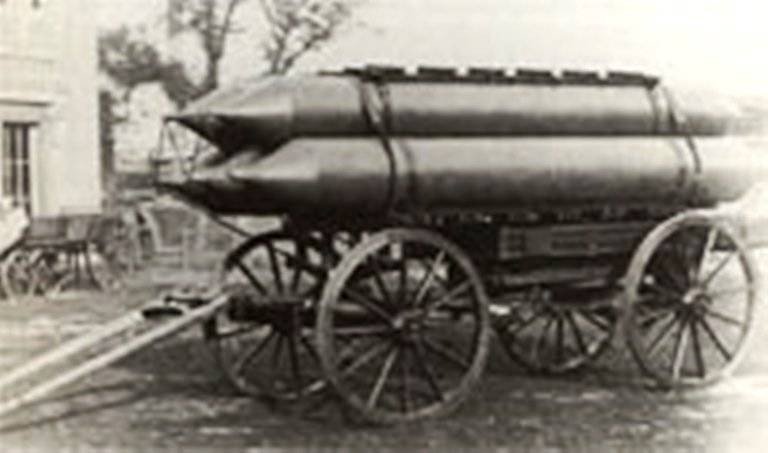
The Pasley Pontoon served for many years, but was replaced in 1836 by the Blanchard Pontoon, which was cylindrical with parabolic ends, consisted of tin cylinders 3 feet (0,9 m) wide and 22 feet (6,6 m) long, spaced 11 feet (3,3 m) apart, making the pontoon very buoyant.
Two pontoons and two superstructure compartments were transported on one cart.
With one or two modifications, Blanchard's pontoons were used in the British army until the late 1870s, but were eventually abandoned.
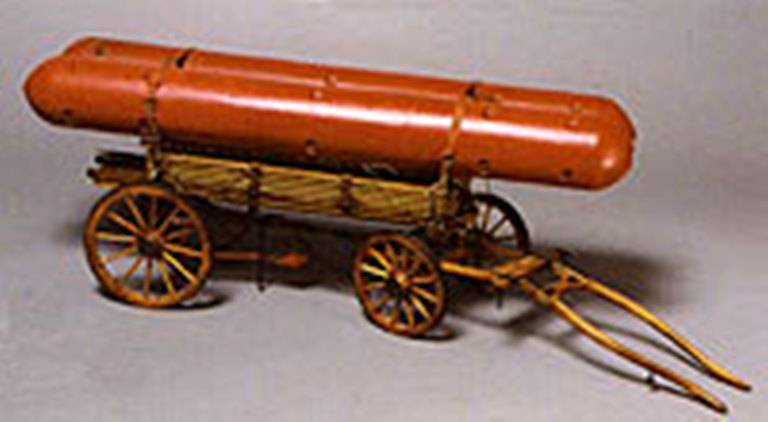
In the late 70s of the nineteenth century, British engineers returned to the design of an open pontoon, which at that time was followed by engineers of all continental armies.
Blanchard's pontoon was followed by a pontoon designed by Colonel Binden Blood.
Ponton was named Blood, after its creator. In its design, as noted above, they returned to the concept of an open boat with deck ends and partially deck sides, on which the oarlocks were fixed. The sides and bottom were of thin yellow pine with a canvas attached to both surfaces with a solution of Indian rubber and coated on the outside with sea glue.
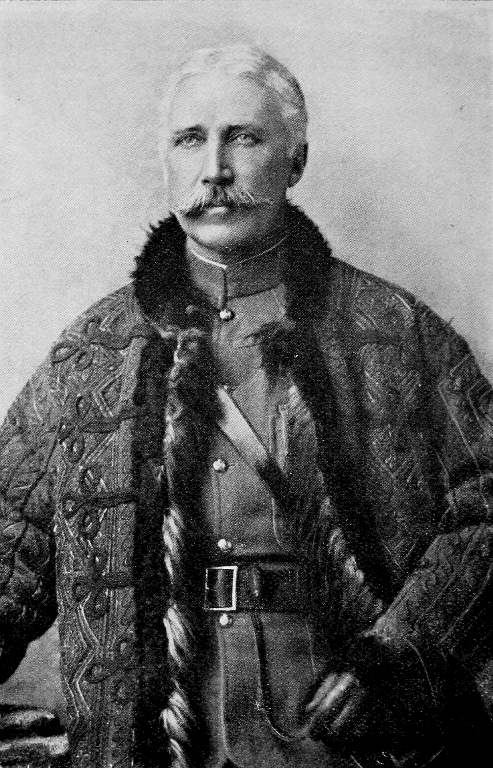
In his memoir, Four Score Years and Ten, published in 1935, Binden writes:

Already in India in June 1879, Binden Blood personally supervised the laying of his own bridge at Fort Pierce, which was to replace the ferry that had been operating there for about 9 years, working on a cable stretching from coast to coast.
The Blood pontoon bridge was about 250 m long.
It must be said here that under the command of Binden Blood, the future British Prime Minister Winston Churchill served in the Malakand Field Forces.
It is also important to note the fact that Queen Victoria herself showed interest in the bridge from the pontoons of Blood. She was directly involved in the construction of a 240-foot (72 m) bridge over the Thames at Datchet near Windsor. She apparently found the event interesting, as the next day the Queen reappeared at the bridge to witness its removal from the water hazard.
The description of the pontoon Blood (or in the literal translation of the "Bloody Pontoon") we find in the "Treatise on military carriages and other products of the Royal crew":
In this situation, a natural question arises.
Why, having progressive closed pontoons, did they return to the design of an open boat?
At the time, the answer was very simple.
Experience with tubular or circular structures such as Blanchard pontoons has shown that when submerged more than halfway, they become unstable and difficult to handle. So one idea to counter this was to make the pontoons triangular in shape. That is, narrowed towards the bottom, like ships.
Such a shape was necessary so that when pressure was applied from passing loads, a larger volume was immersed, and this formed a more stable and increasing opposing force. The idea was good, but impractical with the construction technique of the time. Therefore, it was decided to return to the design of a conventional open boat. In fact, numerous European armies, especially the Dutch and French, given their considerable experience with pontoons, never used the British closed pontoon method. Obviously, this was a case of experience winning over new designs.
The Bloody Pontoon did have a number of important features. For example, a longitudinal support beam was installed on the pontoon to take the load from the deck. This beam could be easily removed if the pontoon was used like a regular boat.
Around this time, the Royal Engineers, like many European armies, formed special pontoon troops.
These troops were staffed with tall and physically strong soldiers, because they had to physically lift heavy pontoon equipment. These specially created units have performed well in the South African wars and, thanks to their physically strong fighters, have won at least thirteen championships in tug of war between units of the English army!
A further development of the Blood pontoon was the Mark II pontoon or the Clauson pontoon, which was destined to remain in service until 1924.
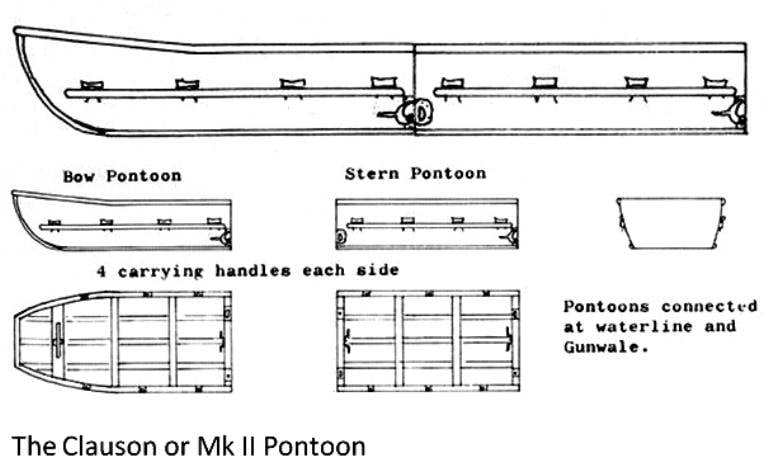
The pontoon is named after Royal Engineers Lieutenant J.E. Clauson.
This weapon element was, in fact, a modified "Bloody pontoon", divided in half. He also demonstrated a return to the multi-section design previously proposed in the Pesley pontoon and the highly successful Austrian Birago pontoon.
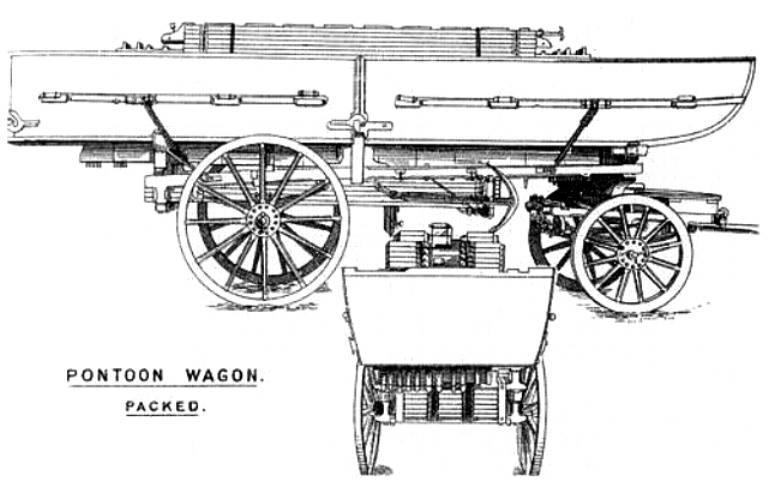
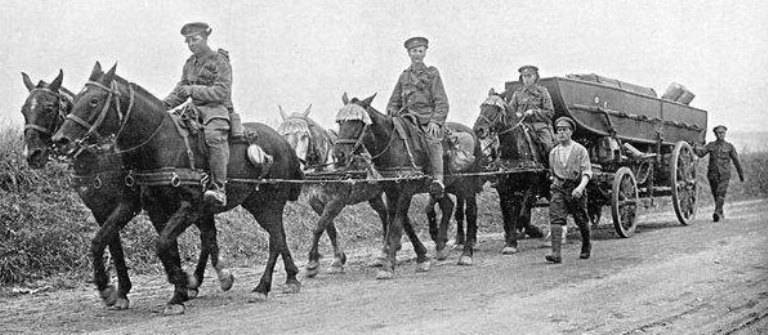
Instead of two identical sections on the Clauson pontoon, a pointed bow and square stern configuration was used. These two sections, if necessary, could be used independently of each other. Parts of the pontoon were connected together using phosphor bronze fittings. This flexibility in use allowed a diverse range of bridge configurations to be assembled, from light infantry to heavier types for vans and vehicles.
The photos below show the Mk II pontoon bridge in action during World War I.
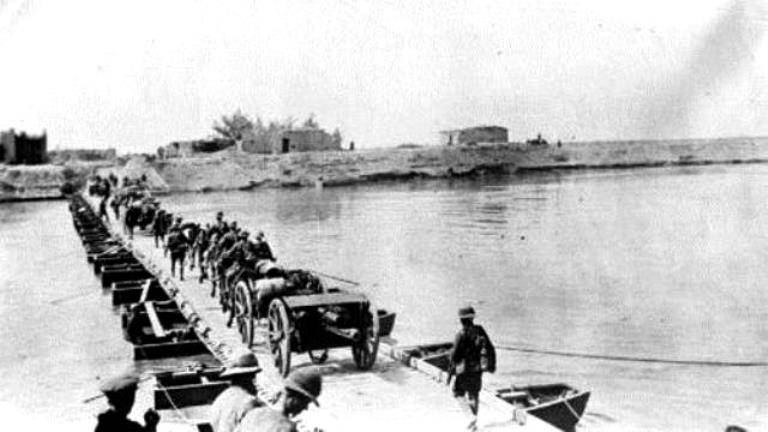
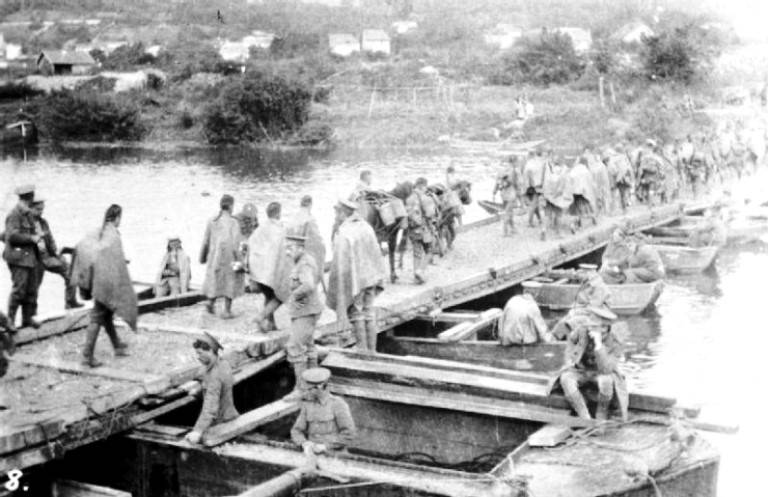
Very often, when arranging a pontoon crossing, we encountered the problem of connecting the bridge with the shore. This is especially important if the bank is higher than the road deck or the river is tidal. Some fittings are required here to provide riverbank access to the pontoon bridge deck.
The British solved this problem simply.
They used the experience of the Austrian army, where they used the Birago overpass to cross from the coast to the bridge and back.
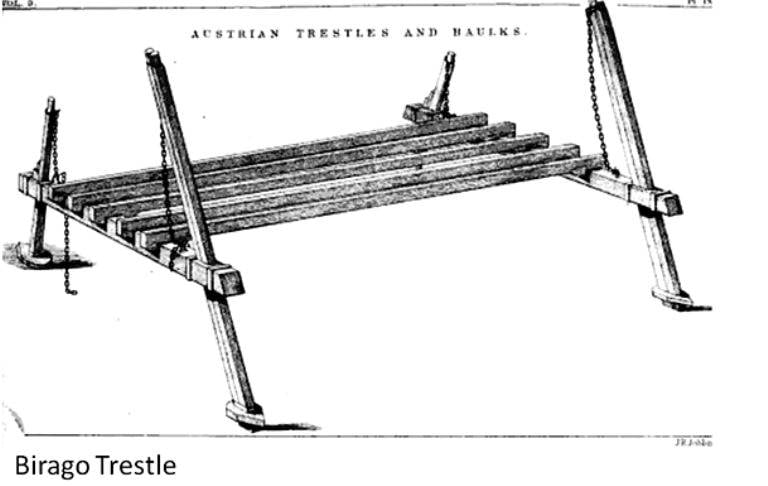
The video below shows an Austrian army exercise in 1939. On them, military engineers equip the coastal passage with the help of a flyover similar to a Birago goat!
At the turn of the century, the Birago flyover was replaced by the Weldon flyover.
At the outbreak of World War I, two Royal Engineers' bridge trains were equipped with Mark II pontoons and Weldon's flyover to complement a range of light raft equipment based on much earlier designs.
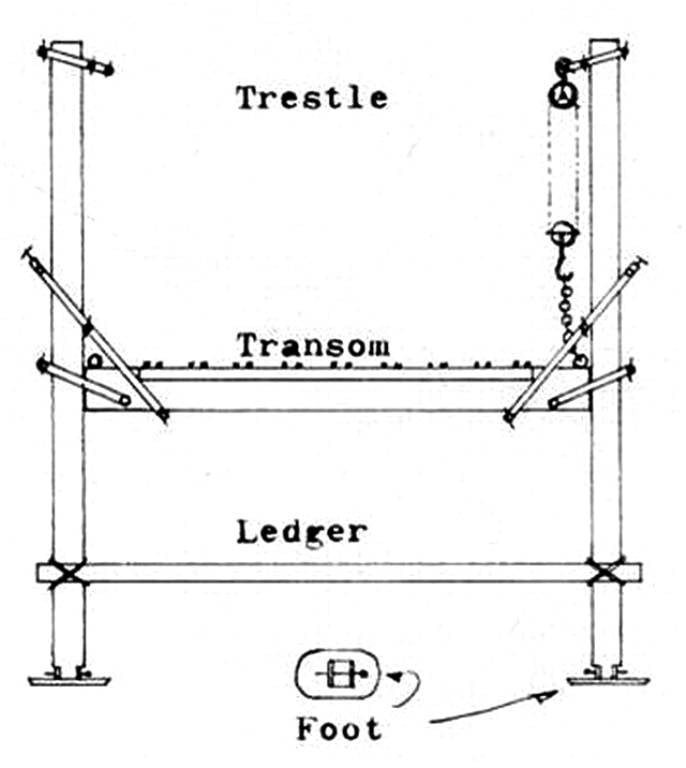
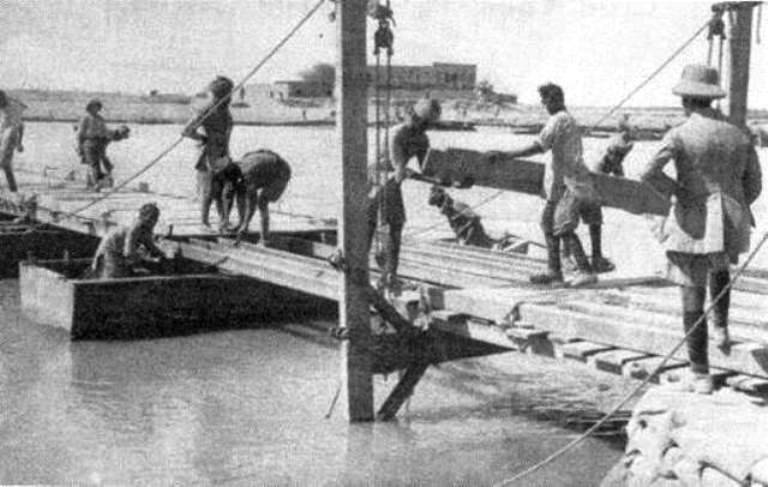
Developments during World War I included the introduction of the Marston Lever Trestle and the Mark IV overpass into pontoon bridges.
The video below shows Australian Anzacs building bridges across the Nile in Egypt during World War I. The footage clearly shows the Mark II pontoons and the Weldon overpass, the bridge installation process, and the use of the pontoons as a ferry.
As the weight of vehicles and artillery increased, it became apparent that the floating bridges would need to be upgraded to accommodate the changing conditions.
These developments included the Mark III pontoon, Mark II with a different cladding and the Mark V flyover, which remained in service until the 1920s.
During the war, a number of floating bridges were designed and used, but in relatively small numbers, including the Type B Sankey Bridge, which used steel beams in place of timber beams on the Mark II Pontoon and heavy steel pontoon.
The next major achievement of British military engineers was the Inglis Heavy Floating Bridge, unique at the time because it used a continuous beam structure to distribute the load on a number of new heavy pontoons. Despite significant progress and successful trials at Christchurch, Dorset, the bridge was not accepted for service because the war had already ended.
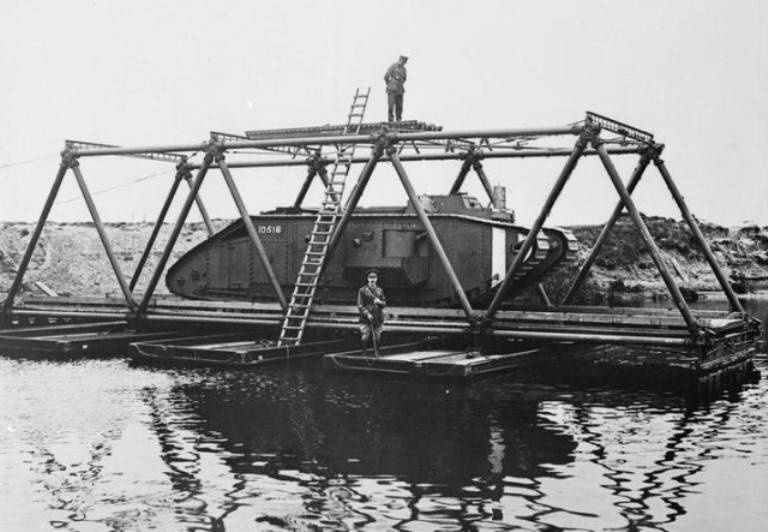
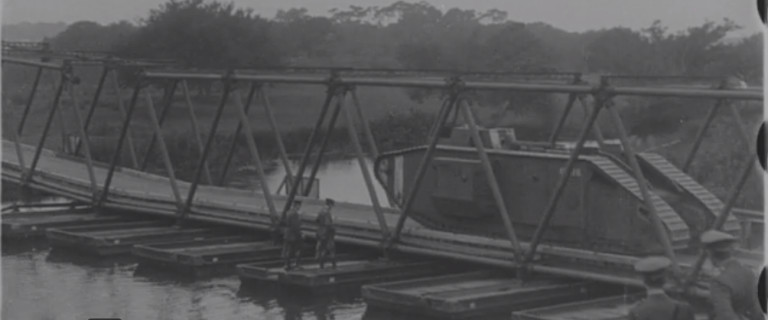
In the late XNUMXs, a number of new pontoons and flyovers were introduced, including the Mark IV pontoons and the Mark V flyover, as part of the renovation of ferry equipment.
The Mark IV pontoon was completely enclosed and consisted of Consuta plywood, which is why it was often called the Consuta pontoon. With safe buoyancy, the bridge's carrying capacity was 6,5 tons.
The figure below shows the method of making the pontoon hull planking.

The copper was a continuous stitch that looped through the inside of the case and exited through the wood cladding. Consuta has four mahogany veneers (onlays that replace the outer layer), interrupted with coarse calico (canvas soaked in linseed oil) to ensure the leather is waterproof.
This design resulted in a very lightweight yet very durable body. Copper was used because there were no waterproof adhesives at the time. This form of stitched construction was patented by Saunders and the plywood was named Consuta plywood.
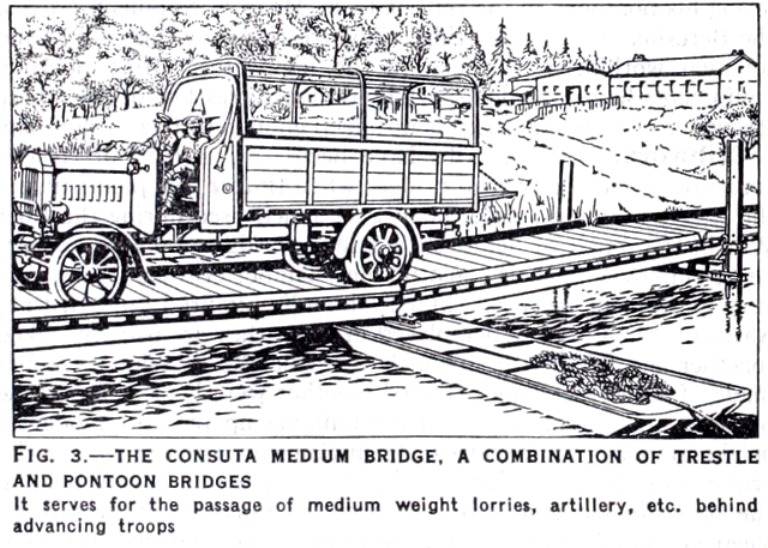
For the first time, mild steel was used in Mark V trestles instead of wood.
The next Mark VI goats were much more powerful and were introduced in 1929. The goats could be used without pontoons as extreme bases for crossings over narrow obstacles.
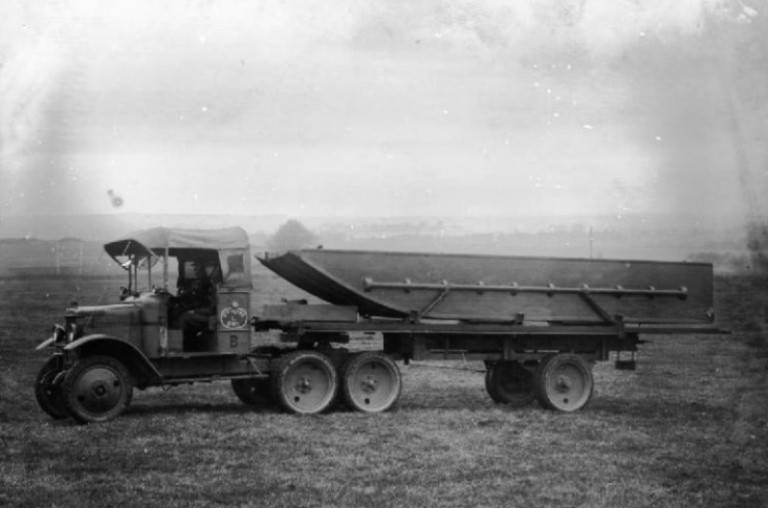
The video below from Pathe shows the moment when the bridge was built from the Mark IV pontoons.
Продолжение следует ...
Information